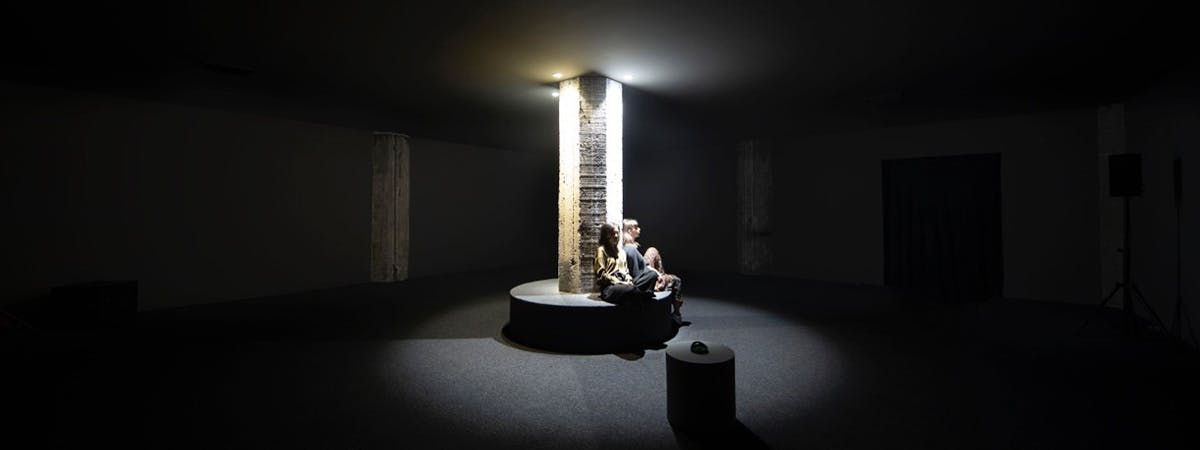This project explored the artistic representation of dreams in different cultures, their socio-political meanings and the shared human experience of dreams. This was materialised through the work of five artists who conceptualised dream states through an audio-visual approach.

Researchers and artists
- Jiang Jiehong (Curator)
- Ak Dolven
- Ignas Krunglevicius
- Camille Norment
- Jana Windren
- Tori Wranes
Research background
This exhibition was mounted at the OCAT in Shanghai, a leading institute of contemporary art which was first established in 2005 in Shenzhen. In 2016, Jiang Jiehong previously collaborated with OCAT on an exhibition entitled ‘The Distant Unknown’ which focussed upon the notion of remoteness whether cultural, geographical or spiritual. The ‘I Hear Your Dreams’ project continued this partnership, enjoying multiple funding streams including the Norwegian Embassy and the Shanghai International Culture Association. The exhibition intended to introduce a wide variety of contemporary artists from Norway to a cosmopolitan Shanghainese audience. The phenomenon of the dream was chosen as a curatorial framework that transcended cultural difference, aiding a Chinese audience’s reception and understanding of these artists. Extensive prior research has been conducted into the reasons behind dreaming and what dreams manifest. Despite this, it was necessary to situate the phenomenon of the dream in a cross-cultural context. In the West, the dream is synonymous with psychoanalysis, Sigmund Freud and his notion of dreams as wish-fulfilment. Conversely, in a Chinese context, a prominent point of reference is Taoist philosophy and the sensation of inhabiting another being whilst dreaming such as Zhuangzi’s ‘butterfly parable’. Ultimately, the exhibition aimed to interrogate how the sensation of dreaming could be expressed artistically. As such, time and sound-based media was chosen as the artform most akin to mirroring a dreamscape.
Research aims
The exhibition posed the following questions: how can we render our private bodily sensations and thoughts publicly visible? Can art blur the distinction between dream and reality? How does contemporary society influence our dreams?
In terms of impact, the exhibition intended to provoke reflection upon a universal sensation common to all humanity whilst simultaneously addressing how the dream is utilised in contemporary society. For example, the idea of the ‘Chinese Dream’ (Zhongguo meng) has been harnessed as a political tool to encourage citizens to participate in rapid economic development.
Research methods
Jiang Jiehong embarked upon a curatorial research trip to Oslo in 2017 which was funded by the Royal Norwegian Consulate General in Shanghai and the Office of Contemporary Art in Oslo. Regarding the selection of artists for the exhibition, the overriding methodology was not simply to present a survey of Contemporary Norwegian Art to a Shanghai audience, but rather, to engage in a dialogue regarding a concept that transcended both Western and Eastern philosophy. As such, the dream emerged as the most relevant conceptual framework to engage with having a long history of analysis in both intellectual traditions. Having visited studios of more than 20 artists, it was decided to select those whose practice pertained to time and sound-based media given that these artistic forms mirrored the cognitive sensation of the dream as an audio-visual phenomenon. In total, five artists were selected. The exhibition catalogue was translated into Chinese in recognition of the international audience this exhibition would attract.
Outcomes and impact
Artist AK Dolven created a video installation that depicts a conscious person moving amongst a group of sleeping teenagers. The work challenged the notion of the dream as an individual phenomenon but rather a societal one, the same person infiltrating all the teenager’s dreams.
Tori Wranes exhibited a work of video art that utilised dreamscapes to challenge the convention of time as a linear entity. She depicts a dream of folkloric and mythological creatures floating in the air against a plain black void-like background.
Jana Winderen displayed a soundscape installation comprising the cries made by underwater sea creatures. A compass was positioned in the centre of the room, sound emanated from different geographical regions in accordance with the sea creature’s diverse habitats from the Arctic Circle to Thailand. The artist hoped this sense of immersion reflected our experiences whilst dreaming.
Ignas Krunglevičius explored the idea of an audible, bilingual dream in both English and Chinese investigating the power of language and culture on our individual psyche.
Camille Norment’s work paradoxically created a visual depiction of sound by placing a silent microphone that beams light onto the wall. Here, the artist refers to the interwoven nature of our senses when dreaming and our ability to conceive of things in an opposing manner via our subconscious.